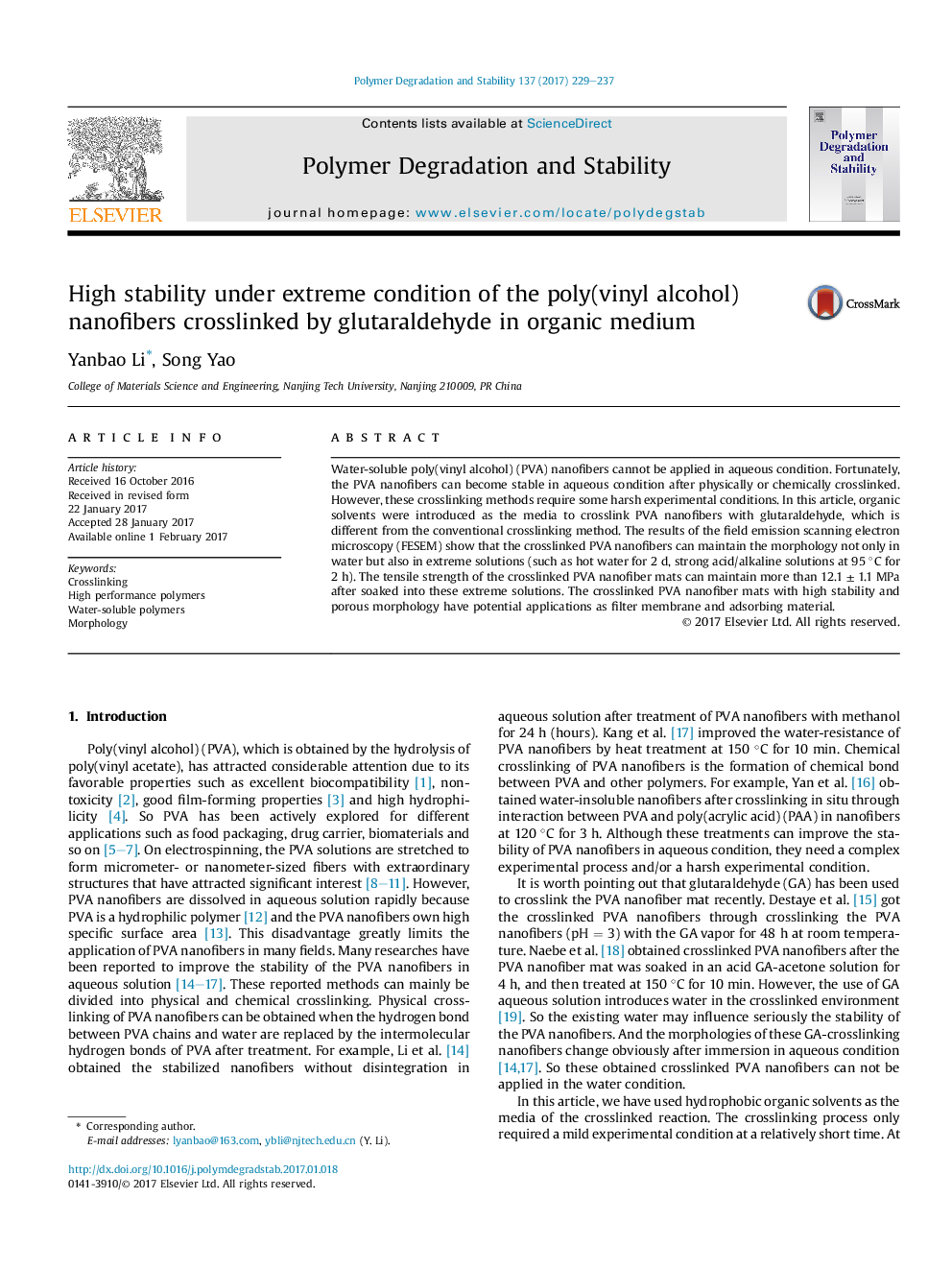| Article ID | Journal | Published Year | Pages | File Type |
|---|---|---|---|---|
| 5200820 | Polymer Degradation and Stability | 2017 | 9 Pages |
Water-soluble poly(vinyl alcohol) (PVA) nanofibers cannot be applied in aqueous condition. Fortunately, the PVA nanofibers can become stable in aqueous condition after physically or chemically crosslinked. However, these crosslinking methods require some harsh experimental conditions. In this article, organic solvents were introduced as the media to crosslink PVA nanofibers with glutaraldehyde, which is different from the conventional crosslinking method. The results of the field emission scanning electron microscopy (FESEM) show that the crosslinked PVA nanofibers can maintain the morphology not only in water but also in extreme solutions (such as hot water for 2 d, strong acid/alkaline solutions at 95 °C for 2 h). The tensile strength of the crosslinked PVA nanofiber mats can maintain more than 12.1 ± 1.1 MPa after soaked into these extreme solutions. The crosslinked PVA nanofiber mats with high stability and porous morphology have potential applications as filter membrane and adsorbing material.
Graphical abstractThe stability of the popular poly(vinyl alcohol) nanofibers has been improved highly after crosslinked by glutaraldehyde in organic medium. The crosslinked PVA nanofibers can maintain the morphology not only in water but also in extreme solutions (such as hot water for 2 d, strong acid/alkaline solutions at 95 °C for 2 h). The crosslinked PVA nanofiber mats with high stability and porous morphology have potential applications as filter membrane and adsorbing material.Download high-res image (426KB)Download full-size image
